'Victorian magnificence skilfully simplified and distilled': A peek at the restoration of Somerleyton Hall gardens
Recent works have retained the former theatrical splendours of these gardens near Lowestoft, Suffolk, finds Tilly Ware.
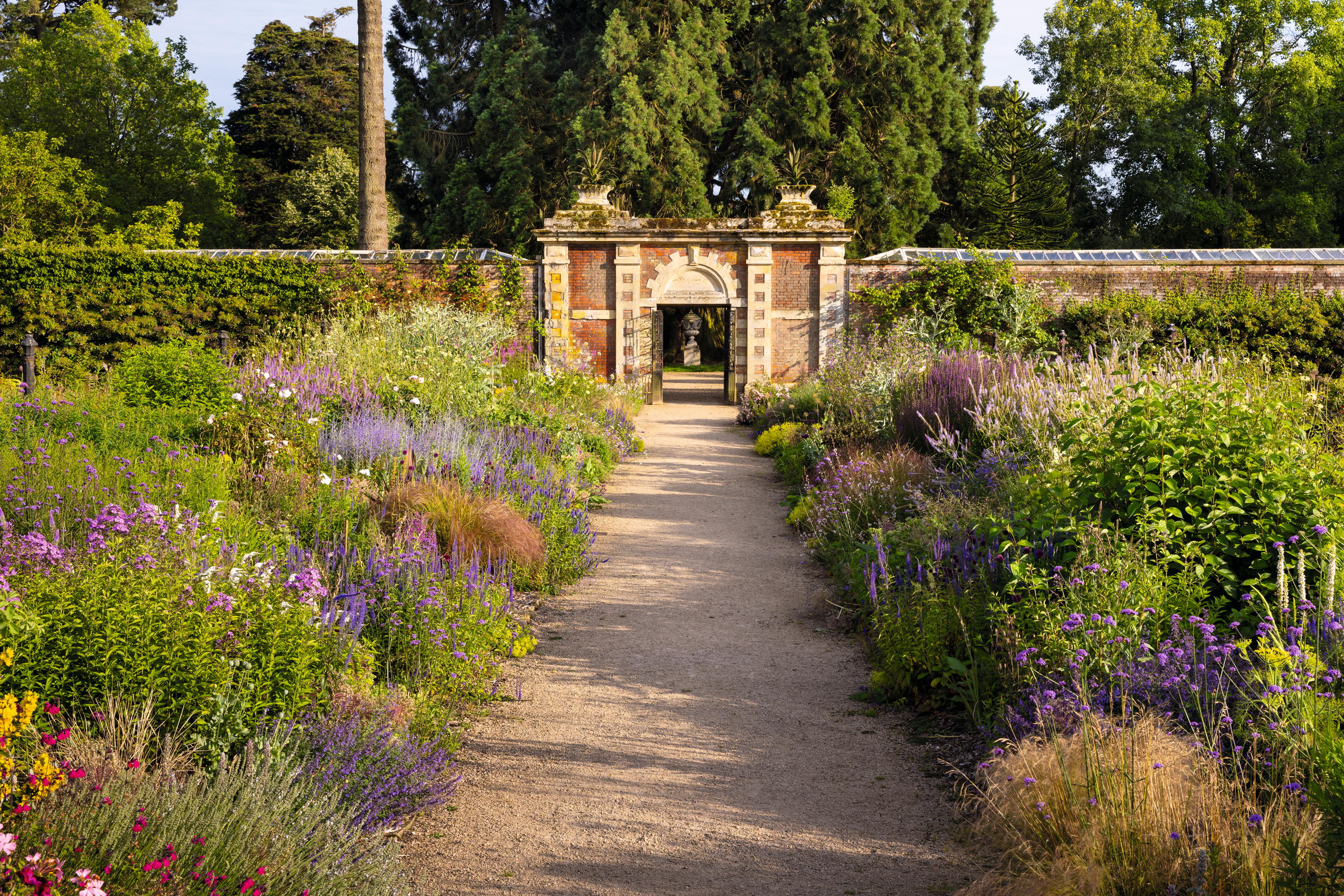
There exists a pair of particularly bewitching 19th-century photographs of the Somerleyton Hall gardens. One depicts the gargantuan, glass-domed winter garden: a network of colonnaded rooms, lit by gas and heated to different climates, housing a vast array of palms, citrus and vines. The other shows Lady Somerleyton feeding her pet seal in the pond. Seals do not live in the shrubberies these days, but Somerleyton’s theatrical splendour still resonates, from the Paxton-designed peach cases to the curling metal aloes that top the walled garden gates. The dilemma for Hugh, 4th Baron Somerleyton, and his wife, Lara, when they moved into the hall in 2010, was how to retain that enchantment, at the same time as dealing with modern practicalities, especially when many parts of the 12-acre grounds had become cluttered or severely diminished. They asked landscape designer George Carter to help reframe and guide an overview of the entire garden — and the whole collaboration has been a resounding success.
The West Front, reports Lord Somerleyton, ‘was the first thing we tackled and the best thing we’ve done’. Previously a 17th-century entrance court, it benefits from a sense of grand arrival, although the formal entrance was moved to the east by Sir Samuel Morton Peto in the 1840s. Peto spent a fortune rebuilding Somerleyton Hall in an exuberant mix of French, Italian and Dutch styles and commissioned William Nesfield, Victorian landscaper of choice for grand country seats, to dream up a garden to complement his newly lavish façade. Nesfield was fond of intricate scrolls, curlicues and arabesques of box, infilled with coloured ‘minerals’ or gravel, and duly installed an elaborate parterre on the West Front. He built the Somerleyton maze, too, and, as Carter points out, was ‘heavily involved in the contracts and site management, which is why the land works are so good’. Nesfield’s balustrades and retaining walls still define the garden from the park.
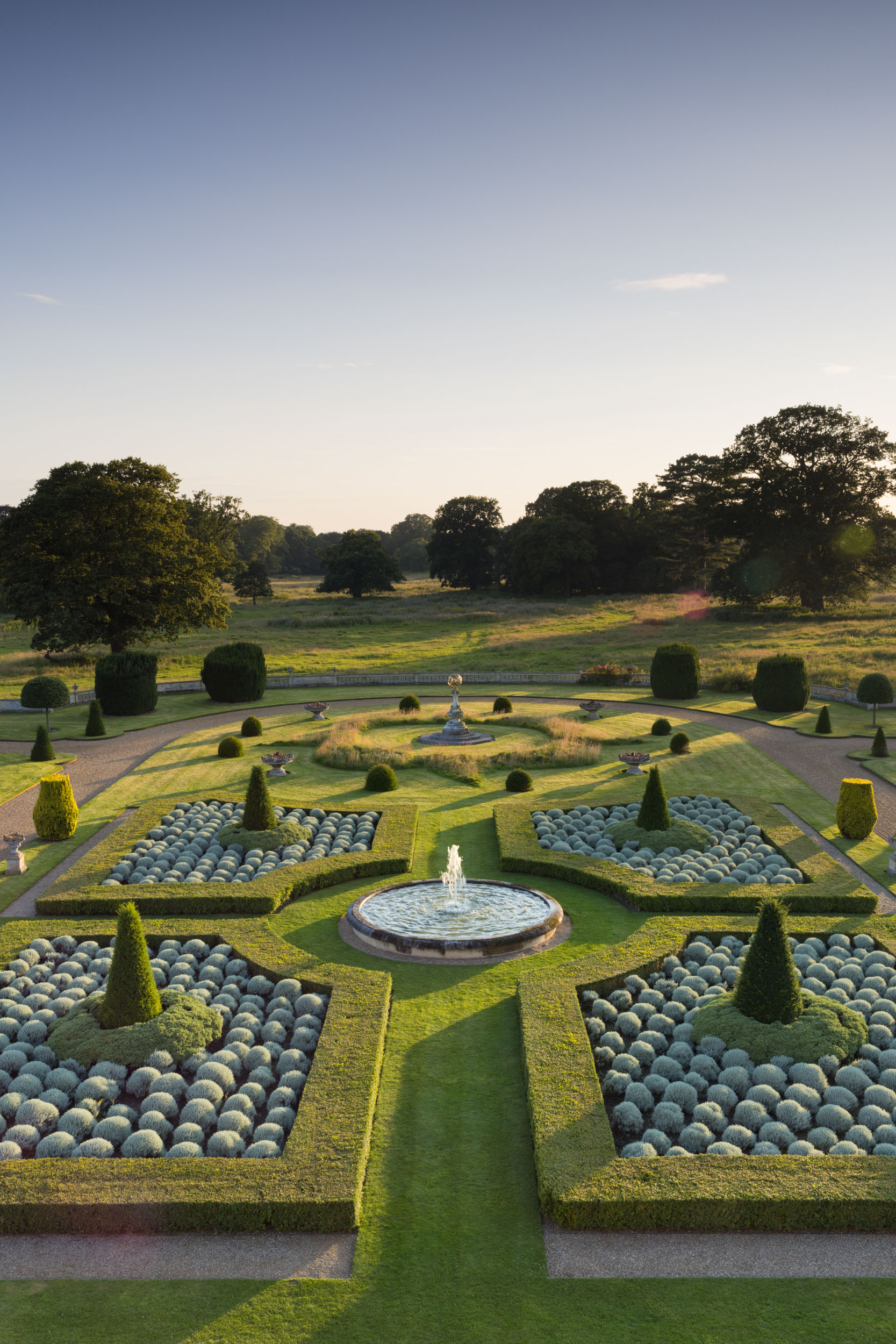
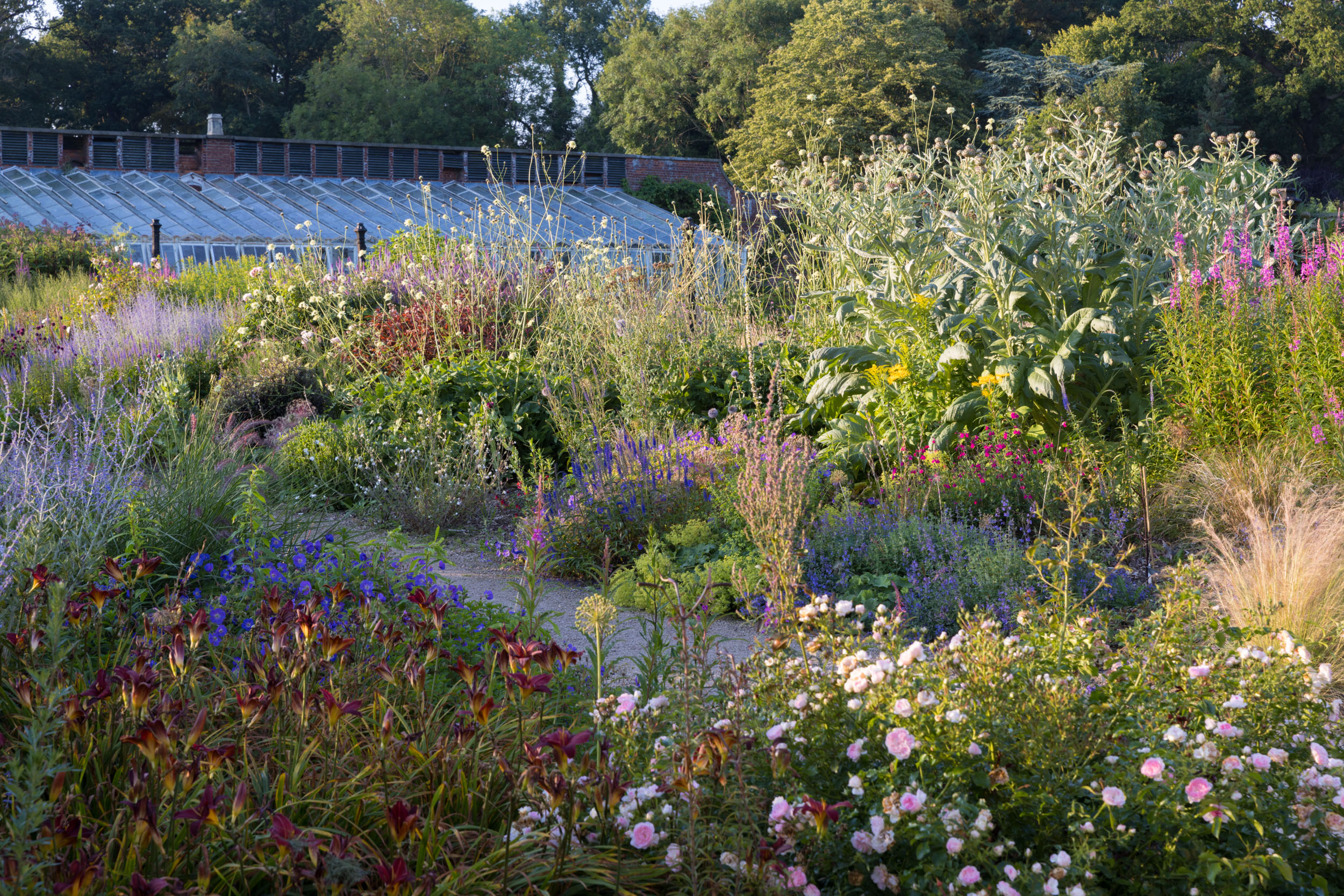
Inevitably, by the 1950s, Nesfield’s extravagant parterre had become unrecognisable, the white gravel removed as a safety precaution during the Second World War and the design reduced to a dwindling rose garden that had, according to Lord Somerleyton, ‘begun to look like a cottage garden against this very busy, ornate house’. Carter decided to bring the scale back, with a new parterre based on Nesfield’s ratios and proportions, but without the planting style that was ‘infinitely too complex and varied and nightmarishly expensive to maintain’. Cones of yew are now simply skirted in hebe, with clusters of domed santolina neat as billiard balls inside the box hedging. Barrel-like yews from Nesfield’s era have been retained, but his rhododendrons have been replaced with mop-headed hornbeams along the north-south axis. Mr Carter introduced a circular pond with a jet fountain to animate the evergreen planting; the effect is gloriously harmonious and serene, particularly as colours and forms correlate perfectly with the rewilded landscape beyond.
‘The park was a fake “wilderness” in the 19th century. In the modern context of rewilding, it now truly looks as it was designed to look.’
Lord Somerleyton
A conservationist and founder of WildEast, a charity dedicated to Nature recovery, Lord Somerleyton has not sprayed his 350-acre parkland for 15 years. The silver-leafed pears and santolinas mirror the sweep of thistle seedheads that bring hordes of goldfinches; golden new growth on the yew topiary echoes distant buttercups and ox-eye daisies. ‘The park was a fake “wilderness” in the 19th century,’ observes Lord Somerleyton. ‘In the modern context of rewilding, it now truly looks as it was designed to look.’
The ebb and flow between formal and informal has been superbly handled across the entire garden, the Victorian magnificence skilfully simplified and distilled. The arboretum, previously cluttered with too many additions, was stripped back to open up views and showcase the immense champion trees. The Sunken Garden, between the house and the arboretum, was once crammed with annual bedding out. In 2014, it was transformed into a deeply romantic white garden, designed by Verity Hansen-Smith to glow in evening light and filled with open-cupped flowers to attract pollinators. Variegated cornus, hydrangeas, roses, valerian, alchemilla, peonies, foxgloves and sweet rocket all spill onto the circular stone steps. This space, including the central pool, once formed part of the winter garden; a row of umbrella-clipped Portuguese laurels traces the ghost of a former interior wall and echoes the orange trees that used to line the corridors. ‘The Sunken Garden was a sleeping beauty,’ says Lady Somerleyton, ‘and still feels very much like a room.’
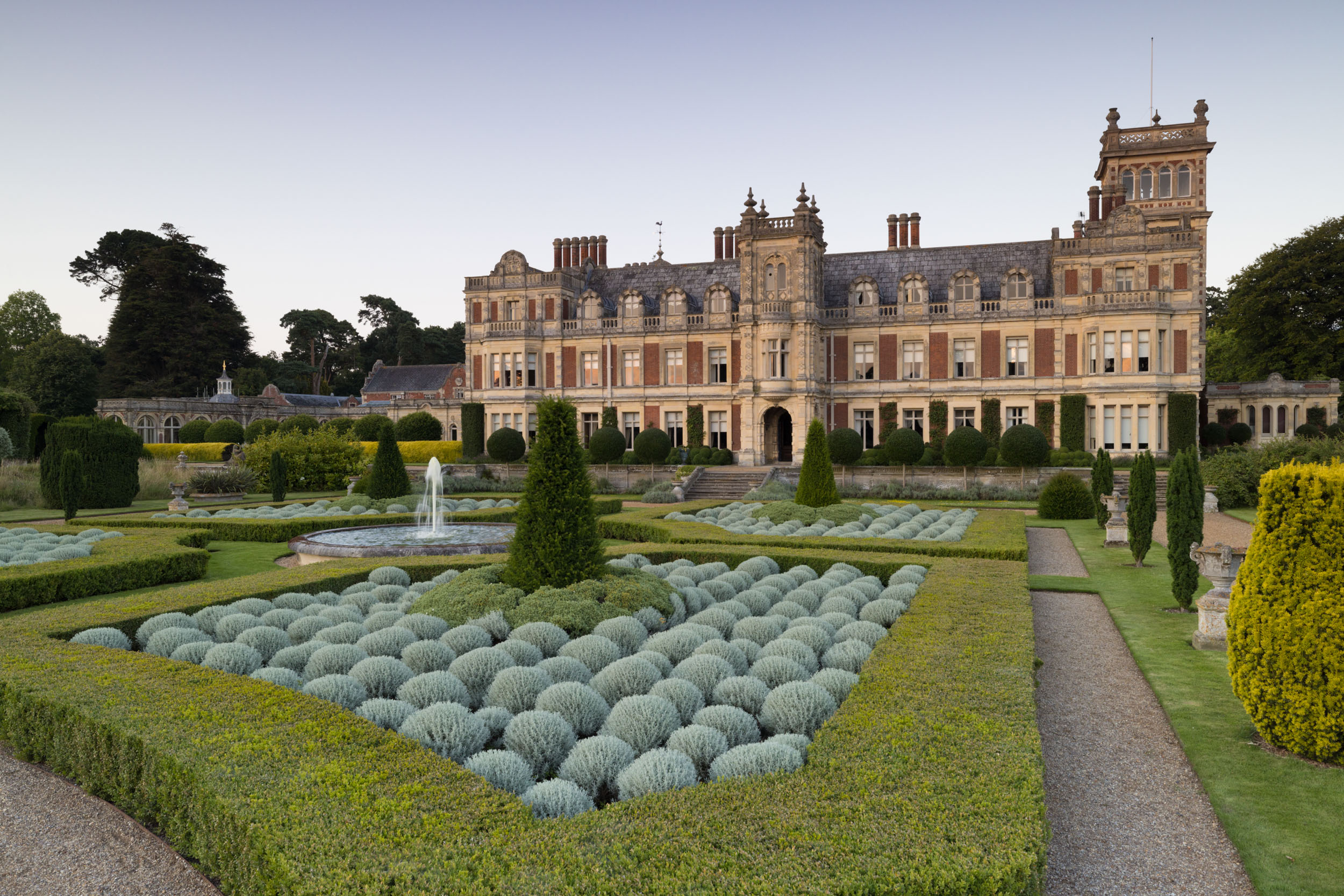
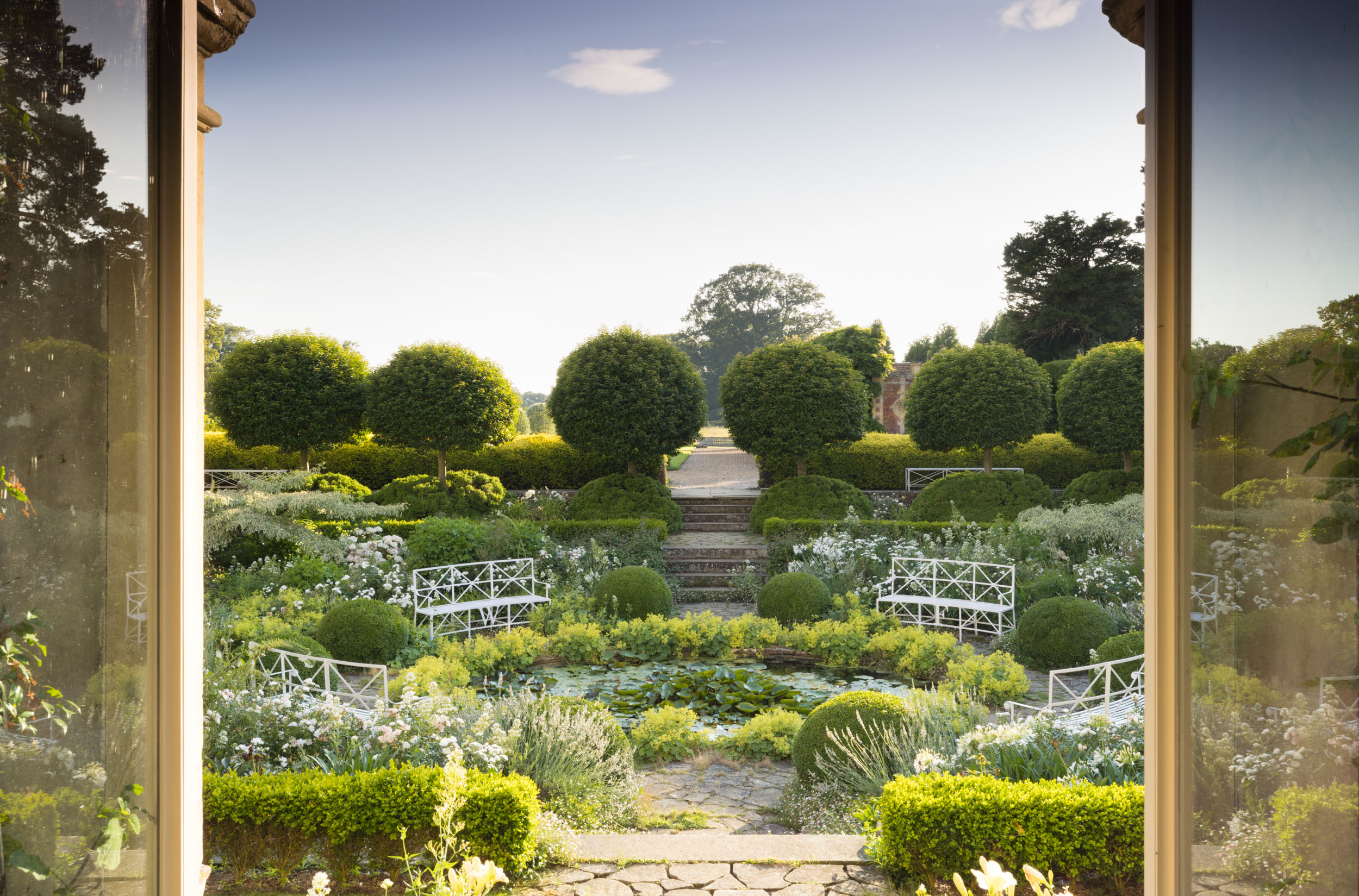
A 100ft conservatory, connected to the house along the east side of the Sunken Garden, is the last remnant of the winter garden that stands wholly intact. Thick with the scent of jasmine and filigreed with exquisite ironwork tracery, it holds a house party of lilies, agapanthus, climbing pelargoniums, bananas, zantedeschia and purple-trumpeted Trozelia grandiflora, spangled with ferns and marble statues. It feels both magnificent and deeply tranquil, a quieter echo of lost extravagance.
In the walled garden, head gardener Simon Gaches channels a similar updated Victorian mindset. ‘We’re still establishing ourselves as a plantsman’s garden,’ acknowledges Gaches. ‘People come for the history, but we also want them to come for the interesting rarities they can find.’ Along the perimeter beds, he has introduced a menagerie of fascinating shrubs and trees; there are particularly lovely mock oranges, such as Philadelphus palmeri and the jumbo blooms and furry foliage of P. coulteri.
Exquisite houses, the beauty of Nature, and how to get the most from your life, straight to your inbox.
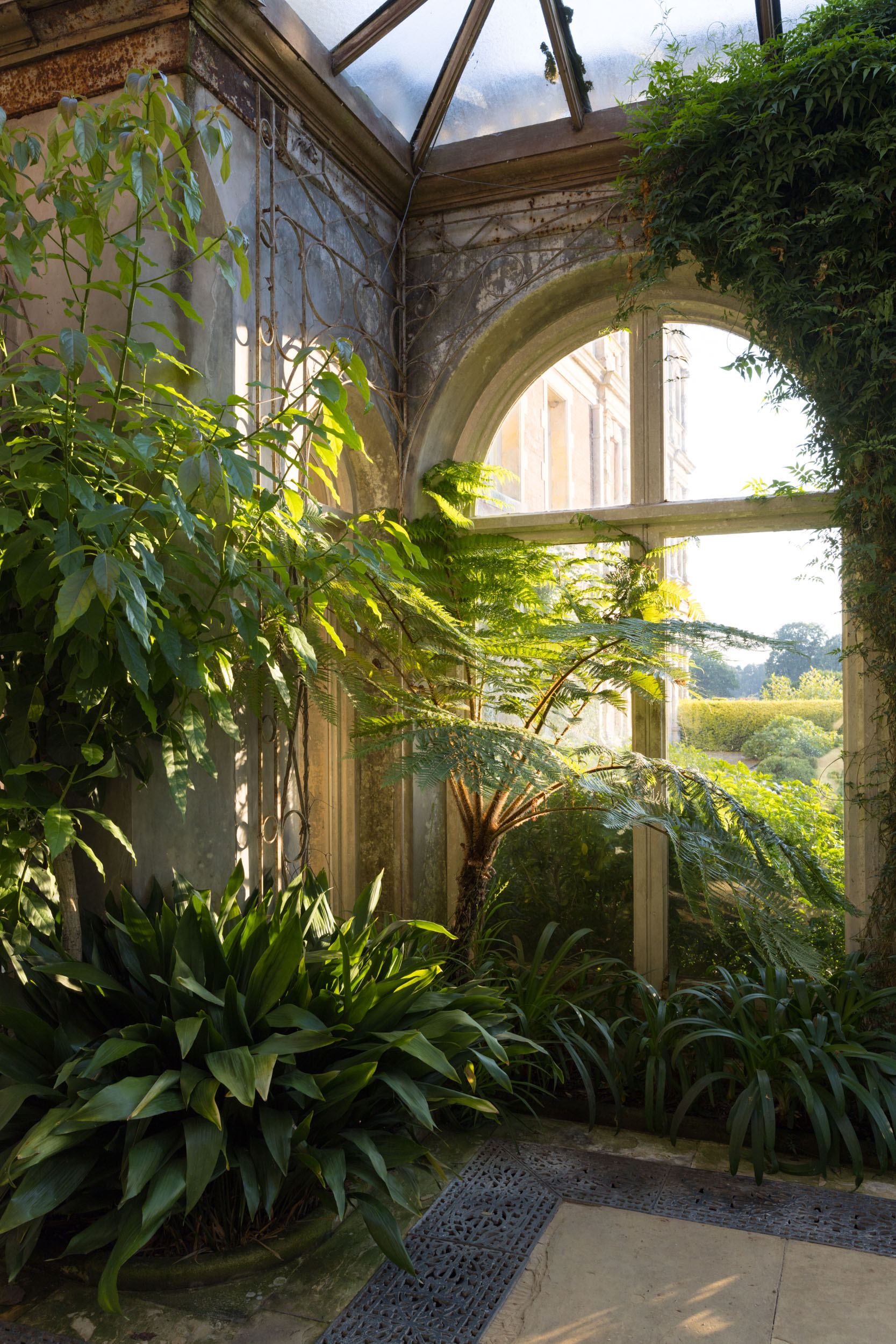
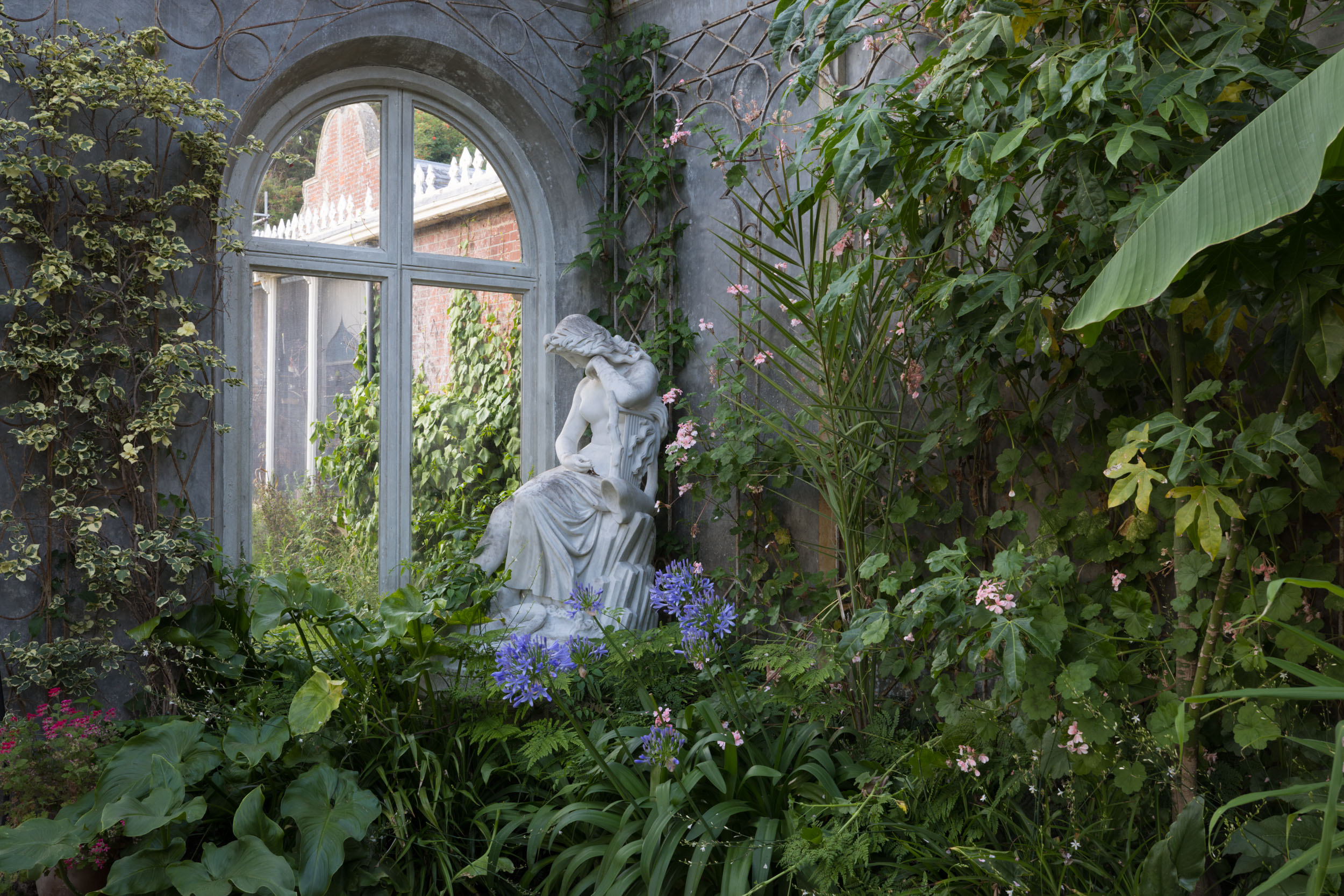
Size is vital here: Calycanthus x raulstonii ‘Hartlage Wine’ has spectacular, blood-red blooms that span 3½in across and the rare form of Chinese bean tree, Catalpa bungei Duclouxii Group, drips with gigantic, pink foxglove-like flowers. Tetrapanax papyrifer ‘Meifeng’ is a resplendent form that can reach 16ft. Gaches has added large-scale plants in his new central borders beside the public entrance, including Delphinium elatum varieties and alliums ‘Gladiator, ‘Universe’ and ‘Pinball Wizard’.
Restoration is ongoing, with seven extraordinary ridge-and-furrow glasshouses to preserve and the aviary to repair — this will soon provide a home to several breeding pairs of turtle doves. ‘The Victorian mind liked to show off exotic things from abroad,’ Lord Somerleyton points out, ‘but now rare things are also native species under pressure, no longer commonly found.’ Somerleyton, with its intelligent balance between simplicity and historical flamboyance, is also a rare thing, not commonly found.
Tilly Ware is a gardener and gardening writer.